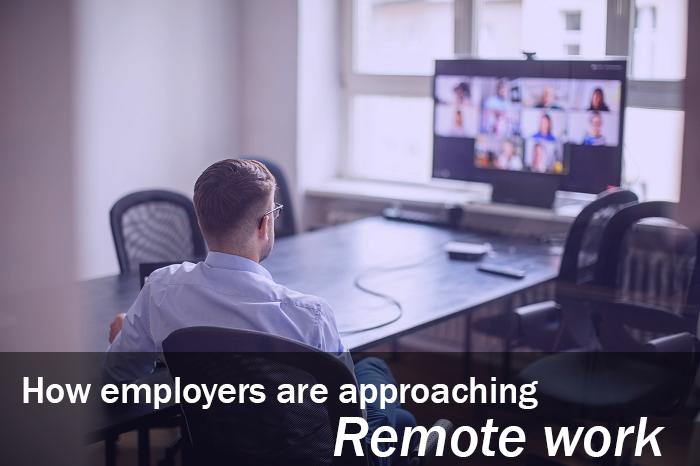Since the pandemic has forced many employees to work remotely, some employers are turning to technology to tackle the employee engagement and experience challenges that shift has brought to workplaces.
According to a survey last year by the International Data Corp. of more than 500 company executives, 45% of U.S. respondents said they anticipate demand for enhanced employee engagement software in the wake of the pandemic.
Related: What Workday’s new $700M deal means for HR tech
Here’s a look at a few.
Global technology firm WalkMe, for example, has created a digital adoption platform that acts like the GPS on your car or phone. By providing step-by-step instructions for navigating applications or software programs, it aims to help employees avoid frustration, confusion or software abandonment. “This platform sits between users and underlying applications,” says Rafael Sweary, president and co-founder of WalkMe. “It’s doing very unique things for employee engagement.”
Related: Microsoft Viva: Why it could be ‘a massive opportunity’ for HR execs
Other capabilities within WalkMe include Shoutout!, which allows companies to send customized, pop-up computer messages simultaneously to all employees. Consider a note encouraging workers to spend the next several minutes performing specific stretches, Sweary says. Later, on-site work areas could be converted to mini-gyms for employees who want to exercise together.
And the tool allows new employees to participate in an onboarding experience that’s similar to a treasure hunt and likely more fun and engaging than a video or email message, he says. They click on a variety of links to find answers to questions about the company and end up exploring the website and learning about their new employer.
Click HERE to register for Spring HR Tech.
Sweary believes that employee engagement also must include such systems as high-quality videoconferencing and access to tools to ease the experience. For example, his company gave employees $300 each to upgrade their home office with tools like upscale headphones and lighting.
Still, organizations can do more. When conducting back-to-back Zoom calls with employees, Sweary asks his first caller to stay on the call until the next person appears online, allowing the two to meet or chat with each other. To help employees who are also parents focus on their work, the platform will soon offer online activities for children that can be performed on old computers that the company has donated to them.
The ‘right toolset’
Providing the right gear for remote workers is “super essential” for engagement and for dealing with home distractions and disruptions, says Ryan Herbst, vice president and chief strategist at UnifiedCommunications.com, a global organization that crafts employer strategies for effective communication and collaboration.
Inside HR Tech: Boese: 3 realities about today’s HR tech market
“The camera sitting in front of them may be trying to mitigate poor lighting in an environment that’s less than perfect,” he says, adding that no one wants to watch someone’s grainy or fuzzy face on a computer screen. “It can also be very hard to get engaged when you’re distracted by barking dogs. Tools like noise-cancellation headphones allow you to virtually close the office door.”
Likewise, the latest conference room technology uses artificial intelligence to make remote employees feel as if they’re sitting in the same room with on-site co-workers.
“Active speaker technology automatically shifts the camera to the person who’s talking,” Herbst says, adding that employees can’t have an engaging experience if they can’t see or hear well. “Facial recognition and voice triangulation zoom right in on the face of the person who’s speaking for an engaging and up-close, personal experience with them. It’s not a security camera view that looks down; you look eye-to-eye to help create that personal connection.”
See also: Don’t miss these speakers at Spring HR Tech
Other technology combines disparate tools like your phone system and document-sharing platform into one. Herbst uses Lenovo’s ThinkSmart View, an all-in-one, voice-activated, smart device that handles chats, calls, voicemail, videoconferencing, scheduling and other administrative tasks.
He says computer monitors are already being released with not just cameras, but also built-in lighting. In the future, he says, HR can expect more touch- and video-enabled devices that optimize work stations and deliver a consumer-grade experience.
“There’s a big opportunity for organizations that take a step back and look at how they optimize the remote and hybrid work experience,” Herbst says. “You have to have the right toolset. You need the underlying plumbing that enables your ability to communicate and share content and collaborate.”
Wanting versus needing to perform tasks
Nowadays, you’ll even find gamification programs for traditional employee communications and activities.
“We’re taking a lot of activities that would usually be an offline journey and making them an online journey,” says Idan Shem Tov, CEO at Eloops, a technology firm that offers an employee engagement platform and engagement activities on its marketplace.
Before their first day at work, new hires download an app that exposes them to company information, its history and activities, and even reveals a few inside jokes from team members.
[click_to_tweet tweet=”Consumer-grade #workplace #HRtech can boost #employeeengagement for #remotework #employees, experts say. Learn more” quote=”Tweet this story” theme=”style3″]
The platform uses virtual currency to incentivize employees and spark excitement to complete routine tasks like responding to polls, reading emails or completing office forms, he says. The currency can be used to buy prizes, including throwing a pie in your manager’s face.
As more employees return to the office, the company plans to offer additional engagement activities on its marketplace that involve wellness and offline events like wine tasting.
“We want to make employees want to read an email,” says Shem Tov. “Gamification makes it a little bit more experiential and provides a consumer-grade experience.”



